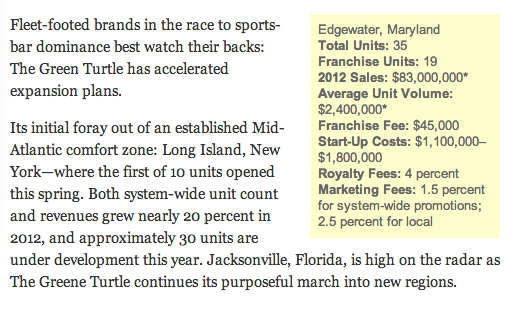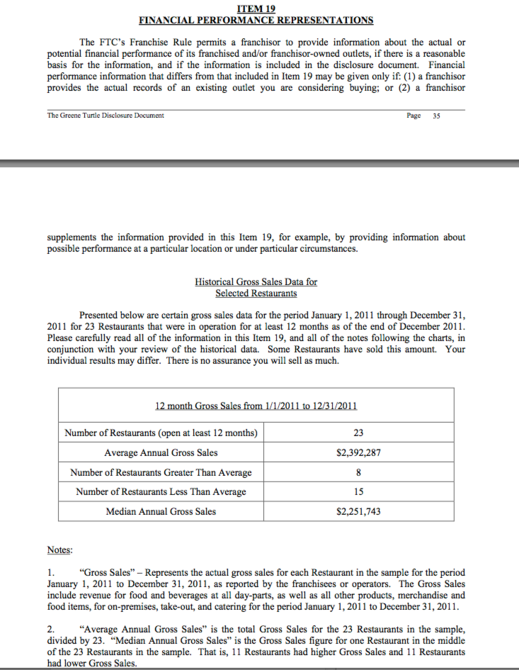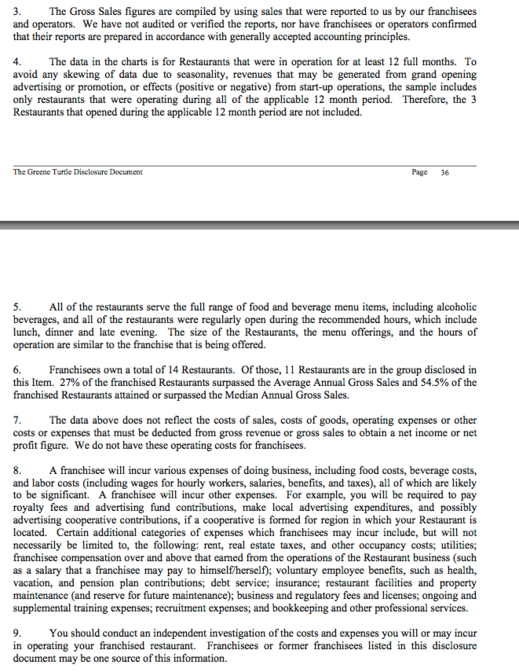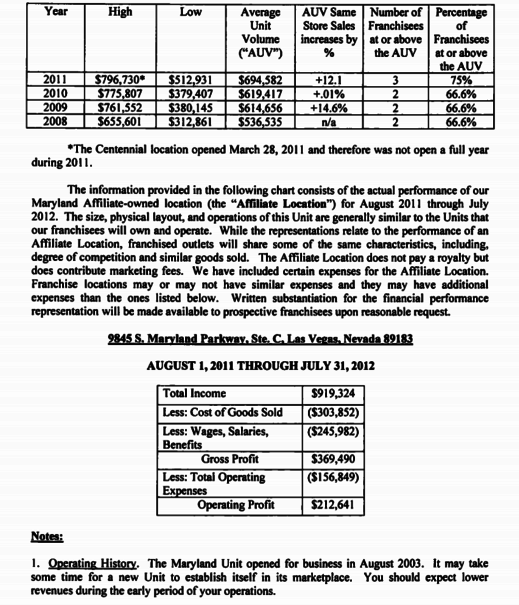Another interesting decision has come down regarding the use of exculpatory clauses in franchise agreements -- and this time, the decision went in favor of the franchisee.
Exculpatory clauses are provisions that parties use to disclaim the making of any promises, representations, or statements outside of the contract.
Such provisions are commonly used by franchisors in franchise agreements to give the franchisor the assurance that their franchisees are not relying on any promise, statement, or representation that was made before signing -- many of which the franchisors may not even be aware (for example, those that were made by salespeople speaking beyond the limits of their authority).
The most common form of exculpatory clause is an integration clause, which in most contracts goes by the title "Entire Agreement." An example of an integration clause (taken from the franchise agreement in this case) is below. Often, a franchisor will be able to rely on an integration clause and other exculpatory provisions to avoid liability in court for promises that were allegedly made to a franchisee that are not reflected in the terms of the franchise agreement.
But other times, a badly-written or otherwise non-comprehensive exclupatory clause will not provide a sufficient shield to a franchisor to avoid liability. The C&M v. True Value case, from the Wisconsin Court of Appeals, provides a good example of how courts can sometimes find that a franchisor's exculpatory clause is insufficient to protect it from liability for an alleged misrepresentation.
In this case, C&M was a True Value hardware store franchisee for a short time, having only operated the store for less than a year before closing it due to financial reasons. Shortly after closing the doors, C&M sued True Value, claiming that (among other things) that True Value misrepresented the possible performance of the franchise business.
The franchise agreement in question, called a "Retail Member Agreement" (the "Agreement") was signed by C&M and contained two different exculpatory clauses that said:
[True Value] has not represented to [C&M] that a "minimum," "guaranteed," or "certain" income can be expected or realized. Success depends, in part, on [C&M] devoting dedicated personal efforts to the business and exercising good business judgment in dealings with customers, suppliers, and employees. [C&M] also acknowledges that neither [True Value] nor any of its employees or agents has represented that [C&M] can expect to attain any specific sales, profits, or earnings. If [True Value] has provided estimates to [C&M], such estimates are for informational purposes only and do not represent any guarantee of performance by [True Value] to [C&M]. [TRUE VALUE] MAKES NO REPRESENTATIONS OR WARRANTIES EITHER EXPRESS OR IMPLIED REGARDING THE PERFORMANCE OF [C&M'S] BUSINESS.
And
This Agreement, and any other agreement which [C&M] signs with [True Value], is the entire and complete Agreement between [C&M] and [True Value] and there are no prior agreements, representations, promises, or commitments, oral or written, which are not specifically contained in this Agreement or any other agreement which [C&M] signs with [True Value]. The current form of the Company Member Agreement shall govern all past and present relations, actions or claims arising between [True Value] and [C&M].
Based on these two exculpatory clauses, the trial Court determined that C&M was placed on notice that anything True Value said could and did not constitute representations or warranties about the possible performance of the business. Based on this holding, the trial Court dismissed C&M's misrepresentation claims.
C&M appealed. The Court of Appeals of Wisconsin first stated the general rule that exculpatory contracts are disfavored in the law. Because of this general rule, the Court said that exculpatory contracts should be carefully reviewed by a trial court to determine whether they violate public policy.
Moreover, the Court advised that any such provisions should be strictly construed against the party seeking to rely on them.
The Wisconsin Court of Appeals stated that, to enforce an exculpatory provision in Wisconsin, the contract must specifically inform the signer of the types of risks being waived.
The Court found that the Agreement failed to notify C&M that it was intended to operate as a "waiver of True Value's liability for misrepresentation" and that it did not make any "mention of disclaiming liability let alone specifying any specific tort." Because the two exculpatory provisions in question failed to "clearly, unmistakably, and unambiguously" inform C&M of these types of liability being waived, the Court held that the provisions failed to protect True Value.
The Wisconsin Court of Appeals also determined that the exculpatory provisions were not sufficiently conspicuous in the Agreement because they "did not stand out from the rest of the form in any manner and did not require a separate signature."
The Court particularly noted that the exculpatory provisions were not placed together, did not have to be specifically initialed or signed by C&M, were not in a conspicuous location, were not surrounded by an attention-grabbing box, and were not emphasized by a heading.
The provisions were in the same typeface as the rest of the contract, and, "although the last sentence in the first provision is in capital letters, it is neither a title nor a warning to C&M."
Because the provisions were not remarkable or notable on the face of the Agreement, the Court held that they could not be enforced against C&M.
In light of the above findings, the Court of Appeals reversed the trial Court's dismissal of C&M's misrepresentation claims, holding the exculpatory provisions void because: "(1) [they] failed to clearly, unambiguously, and unmistakably explain to C&M that they were accepting the risk of True Value's negligence; and (2) the form, looked at in its entirety, failed to alert the signer to the nature and significance of the document being signed."
The lesson for franchisors (at least under Wisconsin law) in C&M is twofold: first, make sure that your exculpatory clauses are reasonably specific, addressing the types of statements that you do not authorize your salespeople to make and upon which your prospective franchisees should not rely.
Second, your exculpatory clauses should in some way stand out from the rest of your franchise agreement -- by separating them from the agreement itself, or by using capital letters, bold, or a text box to call the reader's attention to them. Many franchisors have successfully relied on a separate "disclosure questionnaire" containing exculpatory clauses for this purpose.
For franchisees, the lesson is to carefully read your franchise disclosure document, franchise agreement and other related contracts before you sign them!
If a promise, statement, or representation was made to you by the franchisor or its salespeople and you're relying on it, make sure it's in the franchise agreement or in an addendum before you sign.





